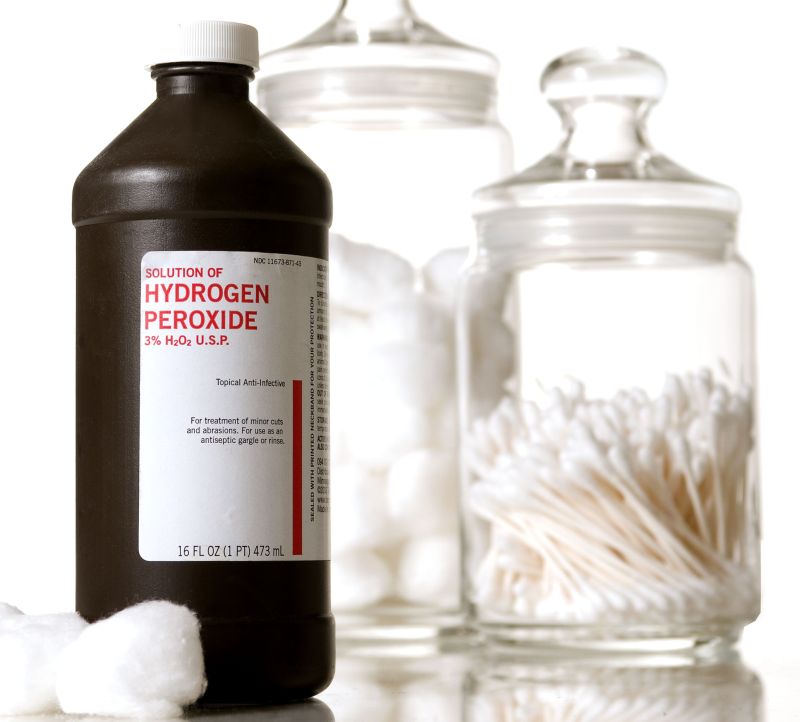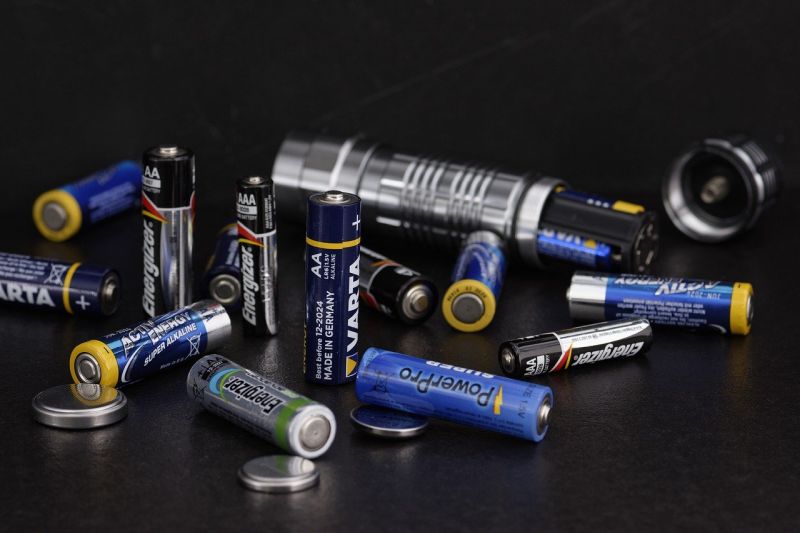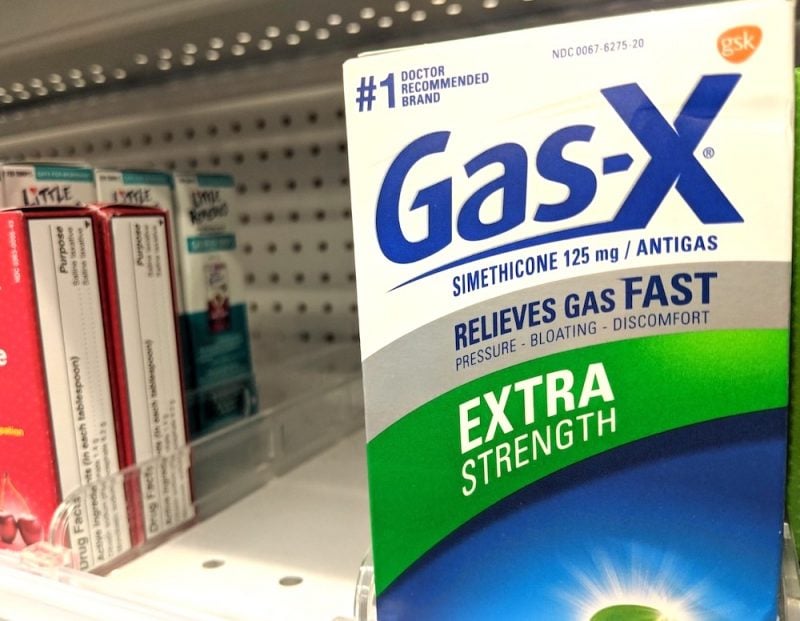Making your dog throw up probably isn’t at the top of the list when you think of Fido first-aid, but alas, this not-so-fun task might save your pup’s life someday. There are some situations, such as your pup swallowing a toxin, that make emptying your dog’s stomach quickly of the utmost importance.
Below, we’ll explain how you can perform this life-saving maneuver and identify a few instances where inducing vomiting might be required and others where it may cause more harm than good.
How to Make Your Dog Throw Up: Key Takeaways
- It is important that owners know how to make their dog vomit safely, should the need ever arise. If, for example, your dog consumes something toxic, you may need to make him vomit to rid his body of the dangerous substances.
- You’ll use 3% hydrogen peroxide to cause your dog to throw up. You’ll want to give your dog 1 teaspoon of hydrogen peroxide for every 5 pounds of your dog’s body weight, with a 3 tablespoon maximum.
- Never induce vomiting without first consulting a veterinarian or the Pet Poison Helpline. Some toxic or otherwise dangerous substances can cause further harm if vomiting occurs.
What Do You Use to Make Your Dog Throw Up?

Before we get started, know that you must always contact your veterinarian or the pet poison helpline before inducing vomiting in your pup to avoid worsening the situation. Not every dog is a suitable canine candidate for at-home treatment.
Don’t have easy access to a vet? You may want to consider getting help from JustAnswer — a service that provides instant virtual-chat access to a certified vet online.
You can discuss the issue with them, and even share video or photos if need be. The online vet consultation can help you determine what your next steps should be.
While talking with your own vet — who understands the ins and outs of your dog’s history — is probably ideal, JustAnswer is a good backup option.
Once your veterinarian or the pet poison control hotline has given you the green light to induce vomiting, you’ll need a 3% hydrogen peroxide solution to administer orally. Hydrogen peroxide is a gastrointestinal irritant, which is why it triggers vomiting in your pooch.
Just be sure to avoid using stronger concentrations, as they can be toxic and cause more harm.
The general dosage recommendation is 1 teaspoon (that’s nearly 5 milliliters for our metric-minded friends) of hydrogen peroxide for every 5 pounds of body weight with a 3 tablespoon (45 milliliters) maximum dosage for large dogs.
How to Make Your Dog Throw Up in an Emergency: The Procedure
Once given the all-clear to proceed by your veterinarian or the pet poison hotline, you need to get started — time is of the essence.
The easiest way to administer the peroxide is via a turkey baster or a large oral syringe. Aim for the back of your pup’s mouth, but never insert the instrument in your dog’s throat to avoid accidentally injuring your pup.
Your pup may do some doggo gymnastics to avoid this, so keeping another person on standby as a helper in keeping him calm is ideal. While this isn’t pleasant for you or your dog, it must be done, so commit and get the job completed as quickly as possible.
Shower him in lots of praise once he’s successfully swallowed the peroxide, but understand that he may not be very happy about the whole ordeal.
The hydrogen peroxide will take about 10 to 15 minutes to kick in. But once it starts, your pupper patient may vomit for over 45 minutes on and off, so it’s important to get him to an area you don’t mind being soiled, such as outdoors or in the garage.
Stay with your dog during this time and monitor him to prevent him from re-ingesting any vomited material. If he fails to vomit after 15 minutes, give him another dose.
While monitoring your dog, stay alert for signs of trouble. This could include things like excessive vomiting beyond the 45-minute window, choking, lethargy, diarrhea, or symptoms of canine bloat. Any of these should be immediately reported to your veterinarian.
Once your dog finishes vomiting, you’ll want to go ahead and visit your vet to verify that your pooch is OK. Don’t offer your pet any food or water until you’ve been given the green light to do so.
Keep in mind that when your dog vomits, you may need to collect a portion for your veterinarian to test. This is easiest to do using a piece of folded cardstock and a plastic or ziplock bag.
Why Would You Make Your Dog Vomit?

We know it’s not the most pleasant activity, but knowing how to induce vomiting is a vital skill to have in your doggo knowledge toolbox. The primary reason you would make your dog vomit is to eliminate something poisonous from his system before it’s absorbed.
This might include toxins like:
Why It Isn’t Always Safe to Make Your Dog Vomit

While making your dog vomit can be helpful in some situations, it can cause serious harm if done in the wrong scenario. This is why checking with your veterinarian or the pet poison hotline beforehand is so critical.
Causing Your Dog to Vomit May Cause Additional Dangers
Some items can become far more dangerous (even deadly) if vomiting is encouraged, including:
- Batteries, as the caustic chemicals they contain can leak and burn your pet’s esophagus or mouth when coming back up.
- Any other caustic or corrosive chemicals, such as bleach, drain cleaners, lime-removal products or detergents (note: there is a difference between a dog swallowing soap versus detergent).
- Sharp objects that may cut the esophagus or mouth, such as metal items or potentially wood (which may splinter).
- Objects that may cause choking, including large pieces of plastic or oddly shaped items.
Other Times Inducing Vomiting Isn’t Recommended
Your dog’s condition may also rule out forcing him to vomit, making that call to your vet or pet poison control essential in preventing accidental injury or worse.
This might include cases like:
- Your dog is lethargic, seizing, or unresponsive
- Over four hours have passed since your pup ate the substance
- Vomiting is already occurring without intervention
- Swallowing or breathing is difficult for your pooch
- Your dog recently had surgery
- Your dog suffers from megaesophagus
- The risk of aspiration is too high (especially in brachycephalic or “flat-faced” breeds)
***
Ideally, none of us will ever have to use this method on our four-footers, but it’s still good to know just in case the fur hits the fan.
Have you ever had to make your pupper toss his cookies? What worked for you? How’s he doing now? Let us know in the comments.














Leave a Comment